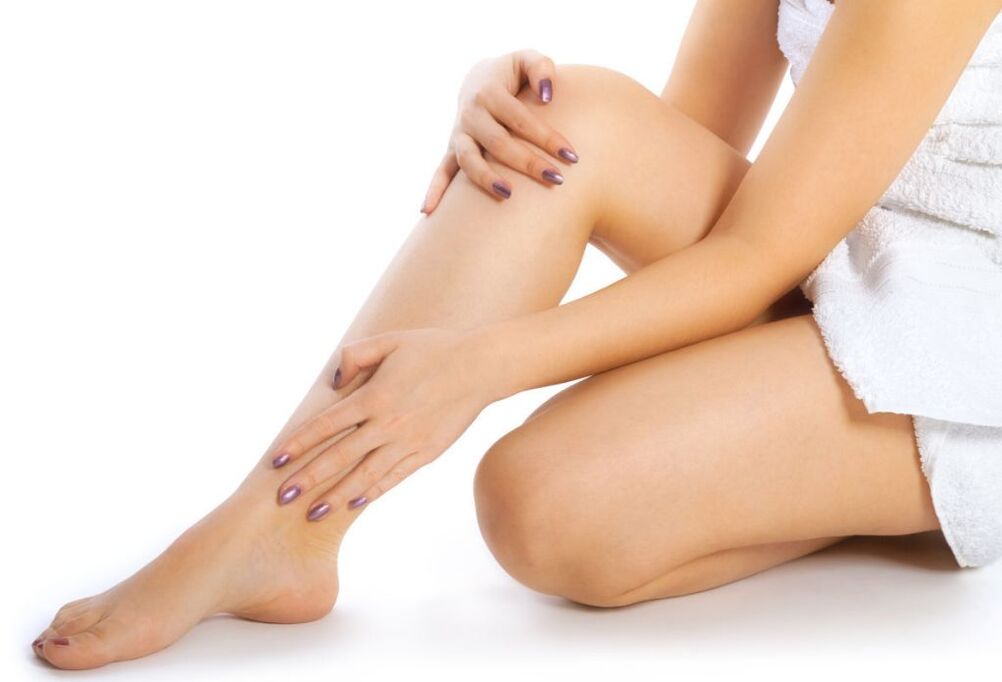
Vascular problems are a fairly common phenomenon that occur more and more frequently in modern society.Today, varicose veins in the extremities are diagnosed not only in the elderly.This disease affects young people and even children.
What are the symptoms of varicose veins in the legs, arms, and other parts of the body?It is important to know the first signs of this disease.Because the effectiveness of all subsequent treatments depends on timely diagnosis.
This article will specifically discuss the symptoms of varicose veins in the legs and other parts of the body.We will also discuss the causes of the disease and the necessary precautions to prevent the development of pathological processes.Of course, we'll also look at various ways to treat varicose veins in the legs, arms, or other organs.
The disease is thought to only affect the body's limbs.However, this is not the case.Recently, doctors are increasingly diagnosing varicose veins in the small pelvis in women.Pathology is also found in the veins of the esophagus and other internal organs.How can such anomalies be identified and treated?Let's take a look.
disease definition
Before finding out what the disease is, it is necessary to obtain general information about the structure of the human circulatory system.
As you know, blood circulates in our bodies through blood vessels.Arteries are the blood vessels that carry blood from the heart to various organs and tissues.Veins are also blood vessels, but blood flows through them in the opposite direction—from the organs and tissues toward the heart.
To keep this process going in the right direction, there are one-way valves in each vein.They provide necessary blood circulation in the right direction.What else can be achieved with this type of valve?The blood does not accumulate in one place, but circulates and fills the whole body.
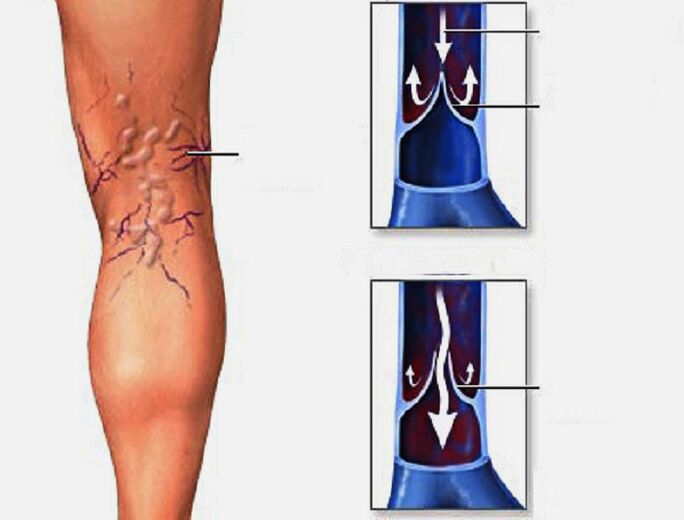
Varicose veins are characterized by damaged or even complete absence of valves within blood vessels.As a result, the general flow of blood is disrupted and accumulation occurs where pathology is detected.As a result, the veins increase in size and become abnormally dilated.
There are several types of veins in our body - superficial veins (located just under the skin), deep veins (hidden deep in muscle tissue), and communicating veins (connecting the first two types).
Most commonly, varicose veins are diagnosed as superficial veins, such as in the legs of the knees, calves, or thighs.However, the disease can also affect blood vessels located in the pelvic or rectal area.
Lower limbs
First we need to pay attention to varicose veins in the lower limbs.Externally, the disease appears as purple, blue, or bluish-green veins under the skin that curl and bulge outward.A similar performance can be seen in the photo below.
Causes of varicose veins in legs
As mentioned above, the main cause of the disease is pathological processes occurring in the blood vessels themselves.What would trigger such a change?
The main predisposing factors for the disease include a genetic predisposition to deformed veins.In addition, excessive load on the legs can also have a negative impact on blood vessels, for example, when a person is constantly standing or walking due to his or her professional work.It’s no surprise that teachers, athletes and hairdressers are prone to the disease.
Other negative factors that affect blood vessel elasticity include excess weight, hormonal changes, and cardiovascular disease (such as thrombosis).
Don’t forget that bad habits can have a negative impact not just on your veins, but on your entire body.It is clear that smoking and alcohol abuse are likely to trigger the development of vascular pathological processes.
Usually, the occurrence of this disease may be triggered by pregnancy, which is a huge pressure and burden on the entire female body.In addition, pregnancy affects the hormonal background of the expectant mother, which can also lead to pathological processes in the circulatory system.However, it's worth remembering that pregnancy is not the cause of varicose veins.Carrying the fetus may be the cause or one of the causes of disease manifestations.
It's known that this disorder is most commonly diagnosed in women, and it's not always related to pregnancy or hormonal changes.Wearing uncomfortable shoes (too narrow or with a heel that is too high) is another major cause of varicose veins in the lower extremities.
An important factor in abnormal blood vessel dilation may be various injuries to the veins.This may include damage or inflammatory processes occurring in blood vessels, as well as the formation of blood clots.
How to detect diseases early so that timely and high-quality treatment can be provided?Let's take a look.
Detailed information about symptoms
The first sign of a problem is pain in the legs, where the valve disease occurs.It is also important to note the unpleasant sensation in the lower extremities, as if the legs are heavy.This feeling is an important signal of blood vessel deformation.
Abnormal protrusion of veins is another sign of pathological development.Dark purple veins appear under the skin, they curl and swell.
The skin in the area of the affected blood vessels becomes dry, flaky, darkened, and itchy.At the site of the development of the pathological process, edema, swelling or swelling of the skin is formed.
If these symptoms are not promptly attended to, symptoms may worsen.The person begins to experience cramps, and open sores form in the area of the varicose veins, which may bleed and cause pain.There is a chance that the wound will become infected, so you should see a doctor as soon as possible to avoid complicating an already difficult situation.
disease identification

What do they say in the hospital?Most likely, a specialist will advise you to undergo the necessary tests to diagnose the disease and rule out other possible diseases.
The most important diagnostic step is a physical examination of the patient.The patient will be asked to stand, sit, and swing their legs.Diagnosis will be based on external examination.
After this, the doctor may recommend a Doppler ultrasound, which can check blood flow and detect blood clots, if present.
The specialist may also order an angiogram.The research involves injecting a certain dye into veins so that the structure of the blood vessels and their pathological changes will be clearly visible on X-rays.
General Principles of Recovery
Can varicose veins be treated at home?Yes, especially in the early stages of the disease.
The first thing doctors recommend is adjusting your weight and nutrition plan.That is, if the patient gains weight, then he should be put on a special diet to normalize his weight.If the patient is of normal weight, then he still needs to monitor his diet and avoid fatty and salty foods, which can negatively affect blood vessels and trigger obesity.
Additionally, a therapeutic diet may include giving up strong coffee (and sometimes tea), smoked foods, and canned foods.Alcoholic beverages are also a 100% no-no for people with varicose veins.It is important to eat more vegetables and fruits (including freshly squeezed juices), grains and soybeans.Of course, don’t forget the green vegetables.Parsley, dill, and lettuce can help you deal with any illness!
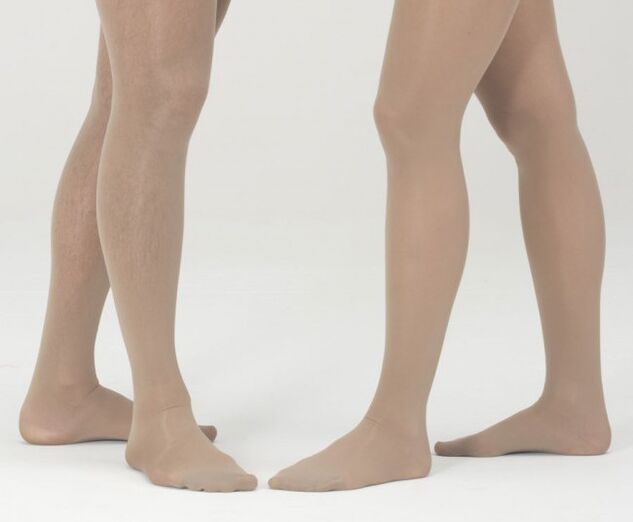
Your doctor may also recommend wearing compression garments, such as stockings or even pantyhose.
Many men may have mixed feelings about this unusual treatment for varicose veins in the legs.However, you shouldn't dwell on this issue.Compression garments are a fairly common method of treating vasculopathy in the lower extremities.Used wisely, it can not only relieve patients' uncomfortable symptoms and pain, but also help prevent the progression of the disease.In some cases, patients are advised to continue using such clothing throughout their lives.Typically, pregnant women use compression stockings to relieve conditions during pregnancy when the body cannot help in any other way.
The essence of such therapeutic bras is that they compress the ankle area of the leg, gradually weakening the effect on the skin of the leg.This stimulates normal blood circulation in the heart.
Today you can find different compression stockings and tights on sale, which differ not only in size but also in the degree of compression (the amount of pressure exerted on the legs).
Another way to treat varicose veins is to perform special exercises for the legs.Experts recommend that patients perform certain exercises that help normalize blood flow to the limbs.
Let's move on to medication
To help combat this disease, special ointments and oral medications may be prescribed, the purpose of which is to thin the blood and improve circulation.In addition, these drugs can strengthen blood vessel walls, reduce inflammation, and relieve pain.
Most commonly, doctors will prescribe intravenous medications (or intravenous medications).They improve lymphatic drainage, strengthen vessel walls, give them elasticity, and reduce capillary permeability.
Patients may also take antiplatelet drugs, which dissolve clots and improve blood flow by inhibiting platelet aggregation and adhesion.
During the progression of the disease, it is important to take medications that prevent blood clotting.For this purpose, the treating physician may prescribe medications based on heparin or its derivatives.
According to experts, it is best to use non-steroidal anti-inflammatory drugs.
Of course, we cannot forget ointments.Local medicines are sold in large quantities in the pharmacological market.
More thorough treatment
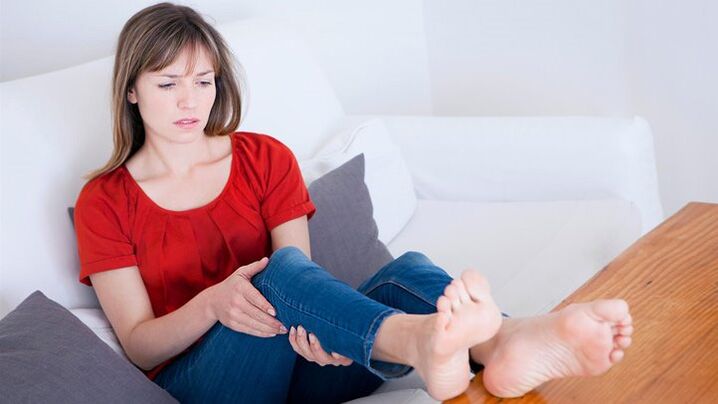
The above methods do not always achieve the desired results.
In this case, your doctor may recommend non-invasive treatment options.What do they include?Let's discuss each method.
laser treatment
One of the gentlest ways to treat varicose veins is to use laser on the surface of the skin.A small flash of light that illuminates the vein wall promotes the development of sclerosis, causing the affected vein to disappear as if it had been removed.
Endovenous laser coagulation is another method of treating varicose veins.However, it involves making a small incision directly above or below the affected vein.A catheter is then inserted into the blood vessel and ultrasound waves are sent.The laser action lasts about a minute, after which the patient will feel heat in the area of the affected vein, which disappears after a while and becomes part of the connective tissue.
Because the patient received local anesthesia before the procedure, the patient felt absolutely nothing.Following the procedure, heaviness and bruising in the lower extremities may occur.However, this does not affect the recovery period in any way.The patient can go to work and carry out daily activities the next day.
radio frequency
In addition to lasers, ablation methods can also be used, which are performed in much the same way as laser coagulation described above.The only difference is the equipment used.Instead of using a laser, experts use radiofrequency energy, which is passed through a catheter into the affected blood vessel, heating it until the vein walls collapse and close.After that, the blood is directed in another direction - into healthy blood vessels.
surgical intervention
It involves complete or partial removal of the affected blood vessels.Varicose vein surgery is only used as a last resort when other treatments have failed.To combat varicose veins, surgeons use a variety of surgical techniques.Some of them are listed below:
- Transection.
- Vein extraction.
- Venectomy.
- Endoscopy.
The essence of these procedures boils down to this: small incisions are made in several places on the leg (most commonly below and above the affected area) and a thin, flexible wire is inserted into the blood vessel to remove the diseased vein.These surgeries are performed frequently and are almost always without complications, but they come with certain risks and inconveniences.
For example, such surgical intervention is performed under anesthesia (general or spinal).The use of anesthesia may cause allergic reactions to the drugs used, bleeding and breathing problems.
Other negative factors that may occur after surgery include the possibility of infection, bruising and swelling of the affected area, nerve damage, vein irritation, or the formation of blood clots within blood vessels.We should also not forget that surgical intervention does not guarantee against future recurrence.
The post-operative period does not last long.Within a day or two, patients can begin their daily routine.He was advised to wear a compression garment for a week.
Sclerotherapy
This is one of the treatments for varicose veins that should be noted, and can be done directly in the doctor's office without hospitalization.During the procedure, a special chemical solution is injected into the diseased vein, which acts as an irritant, causing the vein to thicken and close.Thereafter, blood circulation occurs through healthy blood vessels.
This procedure is suitable when small veins located in the knee area are affected.Sclerotherapy is often used in conjunction with other treatments for varicose veins.
Various drugs are used as chemical solutions.After surgery, patients will need to wear a compression bandage soaked in sclerosing agent.Wearing time is determined solely by the attending physician.
Side effects of these injections include the following negative manifestations:
- Thrombosis occurs in other blood vessels of the lower limbs.
- Headache.
- Pain in lower back.
- Temporary visual impairment.
- Fainted.
- Stimulates the epidermis around the injection site.
Nonetheless, most patients tolerate sclerotherapy well.Positive results in the treatment of varicose veins are guaranteed if contraindications are taken into account and the procedure is performed correctly.
Public first aid kit
Is it possible to use alternative medicine to cure disease?In some cases - yes, especially if we are talking about the main manifestations of the disease, and if treatment is performed with the permission of the attending doctor using grandma's method.
So, what ingredients should you stock up on to start effectively treating pathology?First, let’s drink apple cider vinegar.Mix two teaspoons of this product into a glass of water, add a little honey and drink it on an empty stomach in the morning.
Apple cider vinegar can also be dissolved in water (1:10 ratio) and applied topically as a rub.Gently wipe the affected area at night - by morning, unpleasant symptoms should be reduced.
Typically, chestnut tincture is used to treat varicose veins.To do this, collect beautiful and intact fruits and grind them through a meat grinder.Fifty grams of the raw material are then poured into a half-liter vodka bottle and left in a dark place for two weeks.Thereafter, strain the tincture and take it orally, thirty to forty drops per tablespoon of water, half an hour before meals, three to four times a day.The course of such treatment is one month.Then rest for two weeks and repeat if necessary.
You can also apply this tincture to the affected area at night.
An ancient method of getting rid of varicose veins is the use of leeches.How much leech therapy is needed for each case is decided by the patient and his doctor.
Therefore, we have paid enough attention to varicose veins in the lower limbs.Now let's talk about other types of diseases.
pelvic blood vessels

This pathology can easily be confused with female gynecological diseases.
Pelvic varicose veins can be seen as a hormonal imbalance, a genitourinary disorder, or even as common radiculitis.However, it is important to identify the disease as early as possible.Varicose veins in the female pelvis can lead to disruption of the function of the ovaries and the entire circulatory system.
What causes this disease of intimacy?
disease provocateur
The main causes include difficulty in pregnancy, frequent high-intensity physical activity, sedentary lifestyle, certain gynecological diseases, long-term use of hormone drugs, and unsatisfactory sexual life.Most commonly, pelvic varicose veins develop against the background of increased amounts of estrogen.Of course, don’t forget that being overweight and having bad habits doesn’t improve the situation, it only makes it worse.
How to recognize such a disease?
This important symptom
First, pelvic varicose veins present with varying degrees of pain that worsen after or during sexual intercourse, physical activity, or staying in the same position for a long time.The disease is also characterized by bleeding and frequent urination, along with vulvar or perineal pain, swelling, redness, burning or itching in the area.
A few words about therapy
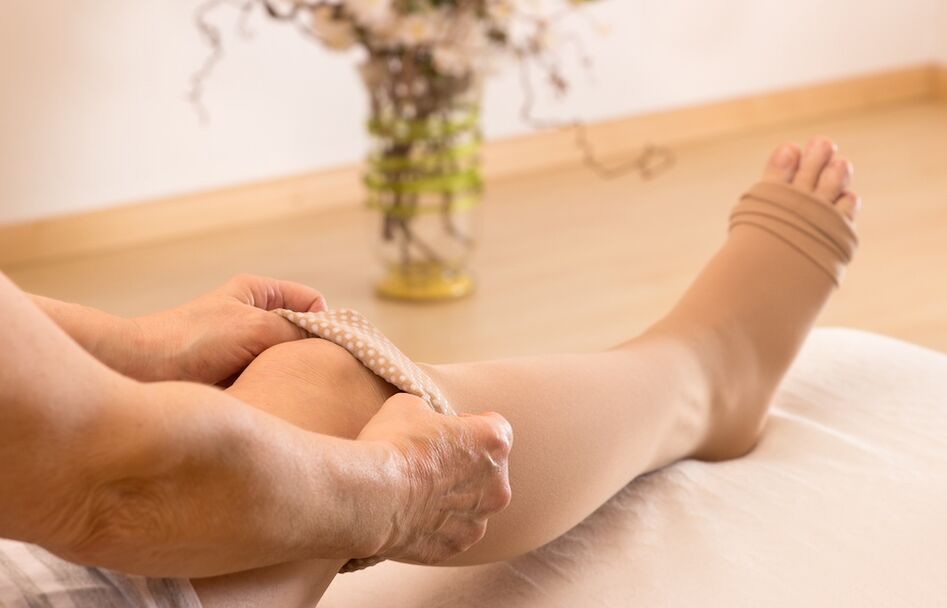
How to eliminate pathological dilation of pelvic veins?First, you should contact an expert.He may recommend wearing compression garments and special calisthenics (these are the well-known supine exercises - "Birch", "Scissor" and "Bicycle").
Among folk methods, decoctions of dandelion or chaga roots, as well as chestnut tinctures, have proven to be the most effective.
What can be said about another type of varicose veins - gastrointestinal pathology?
digestive organs
Esophageal varices is not considered a very common condition; most often it is a symptom of something more serious.
Why does this pathology occur and how to identify it?
Briefly introduce the causes and symptoms
The main cause of esophageal venous dilatation is hepatic vascular congestion caused by thrombus or cirrhosis.This pathology is most common in men and in patients with severe chronic diseases, especially those over fifty years of age.How to recognize disease?
Esophageal varices are usually asymptomatic and present rarely with heartburn, abdominal heaviness, difficulty swallowing, and belching.Sometimes, patients may show external signs of the pathological process - protrusions of blood vessels and veins on the front wall of the abdomen (abdominal cavity).
Most often, the disease is diagnosed during a crisis, when the walls of the veins rupture and bleeding occurs.In most cases, bleeding is accompanied by vomiting (bloody), low blood pressure, general weakness, increased heart rate, and blood (or impurities) in the stool.
If you develop such symptoms, you should definitely have blood tests and X-rays (with a special contrast agent).
Treatment of esophageal pathology
Most often, treatment for this disease is carried out in an intensive care unit.In cases of bleeding, the doctor's first priority is to eliminate the bleeding.For this purpose, astringents, colloidal solutions and hemostatic agents can be used.In some cases, doctors recommend a transfusion of blood or its main components (or blood substitutes).
If the above methods don't work, experts may recommend surgery or esophageal sclerosis.After recovery, patients will need to adhere to a fairly strict diet for the rest of their lives.Proper nutrition includes portioning meals, avoiding fatty, smoked, salty and fried foods, and eliminating foods that are too hot or too cold.
prevention
It is well known that this disease is easier to prevent than to treat.What measures should be taken to prevent pathological processes in the veins?
First – a healthy lifestyle!A healthy diet, moderate physical activity, getting rid of bad habits, wearing comfortable shoes and clothes - all this not only helps to improve your health, but also prevents many serious diseases.I wish you good health!


















